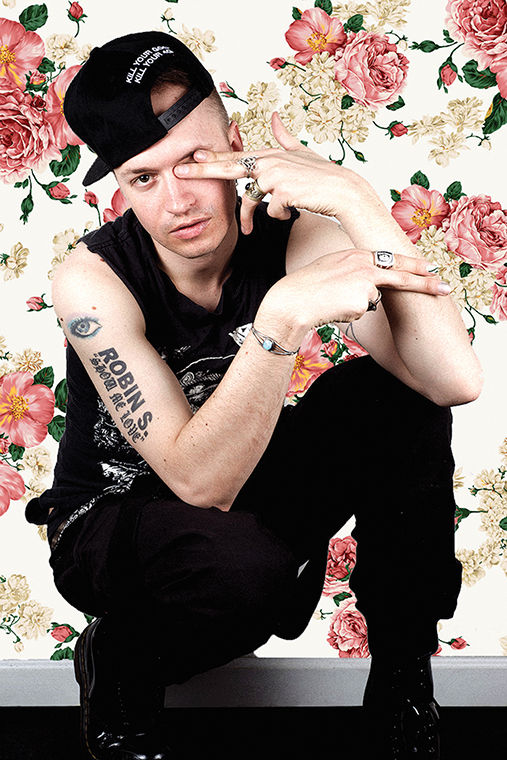Explore alternate realities with Pictureplane
Travis Egedy, commonly known as Pictureplane, will perform songs from his new album at Lincoln Hall, 2424 N. Lincoln Ave., on Nov. 28.
November 23, 2015
Pictureplane, the solo project of musician Travis Egedy, has been noted for its kaleidoscopic mixture of industrial, noise, hip-hop and rave sounds.
Prior to the inauguration of Pictureplane, Egedy studied painting at Rocky Mountain College of Art and Design, an experience he still deems valuable to his work.
Pictureplane released its debut album Dark Rift in 2009, gaining media attention shortly thereafter for coining the term “witch house,” referring to darker EDM.
Having released its latest album Technomancer Oct. 30, Pictureplane is set to perform Nov. 28 at Lincoln Hall, 2424 N. Lincoln Ave.
The Chronicle spoke with Egedy about Pictureplane’s influences, themes and upcoming Chicago performance.
THE CHRONICLE: How did you get into making music?
TRAVIS EGEDY: When Pictureplane formed, I was still a freshman in art school. I was around 19 when I came up with that name. I started making rap music with my friends in high school, but when I went away to college, I started getting into more experimental music and my influences changed. So, I wanted to start a new project that reflected that, but I didn’t start playing shows as Pictureplane until around 2006.
What inspires your work?
While working on my newest album, I was reading a lot of books on alternative history, which is the idea that everything we have been told about history has been controlled and is not the full story at all. It just looks at ancient humans in a much different light. [It speculates] that they were far more advanced than we give them credit for. I am really inspired by people who question reality and the status quo.
Where does the name Pictureplane come from?
Pictureplane is a term in art that isn’t used very much. I found it in the back of an old art textbook. It’s just a word for the flat, two-dimensional surface the canvas is sitting on. I like the word “plane” a lot. It makes me think of planes of existence. It has a lot of meaning.
How would you describe your music?
I’ve been influenced by a lot of industrial music and minimal-synth, darkwave stuff. I wanted to blend that with my hip-hop influences. I wanted to create an industrial hip-hop production that I had never heard before. It’s a sort of dark-rave pop or a mutant strain of rave music.
What does your music represent?
I really want my music to represent resistance and rebellion to a lot of things. I think rebellion is really important. I want it to represent the human spirit, the human condition and freedom. I want it to inspire people to break free from all forms of control. My music is also a way for me to explore that within myself. [It helps me] break free of social conditioning in a world that doesn’t really want us to be free.
What do you like most about Chicago?
There’s a really great group of people in Chicago that throw parties. They throw a lot of great parties at Club Berlin. I want to shout out to all the club kids of Chicago—Deathface and Teen Witch in particular.
What advice do you have for your fans?
Just have no limits. Don’t put yourself into some kind of box. Have fun and don’t be concerned with other people’s opinions. With the Internet, there’s a lot of pressure to impress people right away or try to blow up over night, but people should try not to stress too much about that. They should just have fun and experiment. Experimentation is key.








